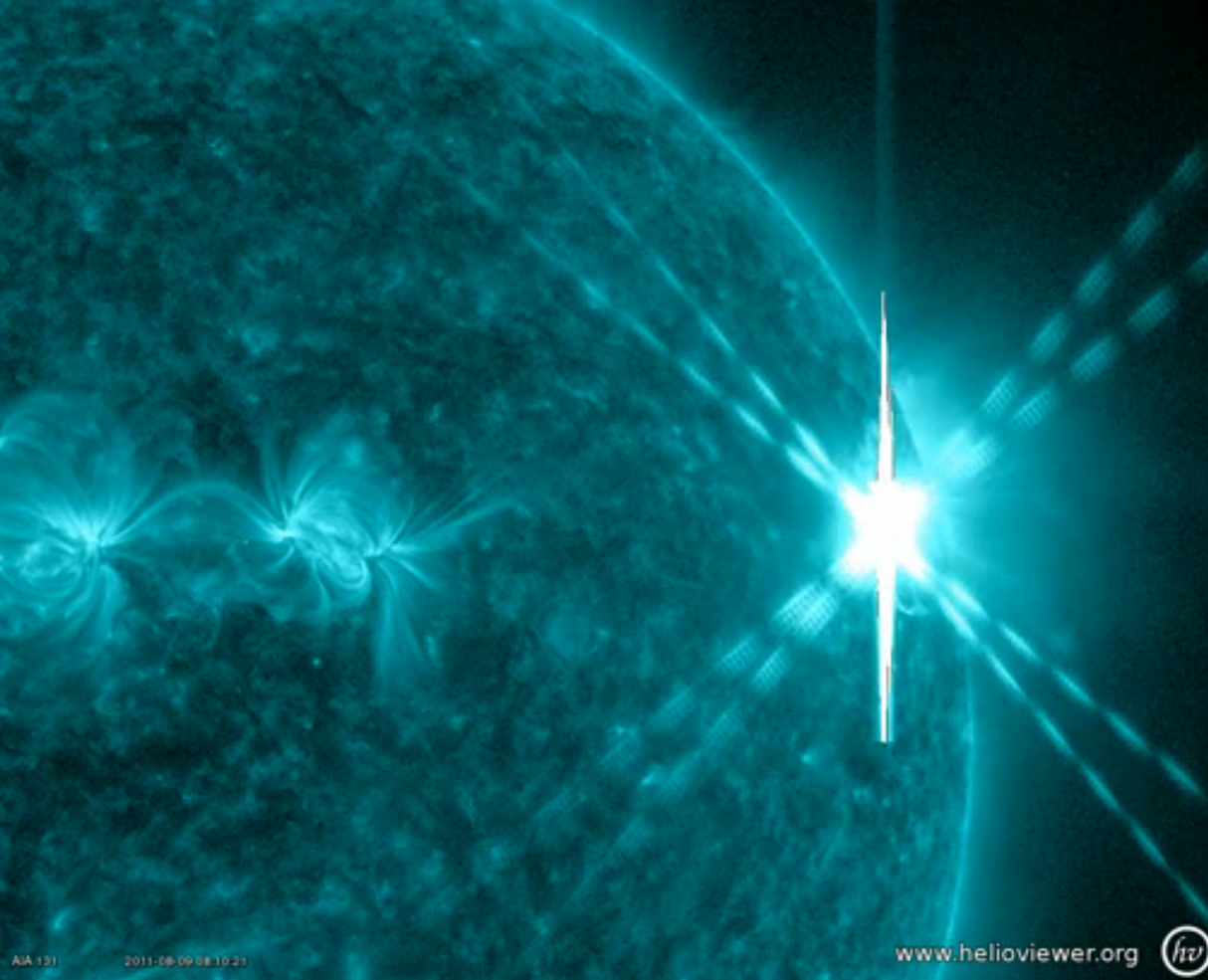How Does the Sun Spark X-Class Solar Flares?

The sun unleashed a massive solar flare on Tuesday (Aug. 9), one powerful enough to earn X-class status, the highest ranking for solar flares.
Solar flares, huge explosions in the sun's atmosphere, are classified on a logarithmic scale, where each letter represents a 10-fold increase in energy output compared to the one before it. The smallest solar flares are A-class, followed by B, C, M and then, at the top of the scale, X.
Within each class, there is also a linear scale from 1 to 9, which allows a finer level of classification. An X2 flare is twice as powerful as an X1. [Worst Solar Storms in History]
So what is each class like? According to a statement by NASA's Goddard Space Flight Center, "C-class and smaller flares are too weak to noticeably affect Earth. M-class flares can cause brief radio blackouts at the poles and minor radiation storms that might endanger astronauts."
Then come X-class events. "Although X is the last letter, there are flares more than 10 times the power of an X1, so X-class flares can go higher than 9," NASA writes. "The most powerful flare measured with modern methods was in 2003, during the last solar maximum, and it was so powerful that it overloaded the sensors measuring it. The sensors cut out at X28." The National Oceanic and Atmospheric Administration's GOES satellite system measures energy from solar flares. [Will Sunscreen Protect You from Solar Flares?]
The biggest X-class flares are by far the largest explosions in the solar system, according to NASA, producing as much energy as a billion hydrogen bombs. Outpourings of plasma from the sun, called coronal mass ejections (CMEs), often follow, and both outbursts can be dangerous.
"If they’re directed at Earth, such flares and associated CMEs can create long lasting radiation storms that can harm satellites, communications systems, and even ground-based technologies and power grids," NASA stated. "X-class flares on December 5 and December 6, 2006, for example, triggered a CME that interfered with GPS signals being sent to ground-based receivers."
Get the Space.com Newsletter
Breaking space news, the latest updates on rocket launches, skywatching events and more!
Today's flare registered as X6.9, making it three times larger than the previous largest flare in the current solar cycle, according to scientists with NASA's Solar Dynamics Observatory, a space observatory that monitors the sun. Luckily, though, it erupted on the opposite side of the sun from Earth.
Expect even bigger flares over the next couple of years: The solar cycle peaks in 2013.
This story was provided by Life's Little Mysteries, a sister site to SPACE.com. Follow Natalie Wolchover on Twitter @nattyover. Follow Life's Little Mysteries on Twitter @llmysteries, then join us on Facebook.
Join our Space Forums to keep talking space on the latest missions, night sky and more! And if you have a news tip, correction or comment, let us know at: community@space.com.

Natalie Wolchover was a staff writer for Live Science and a contributor to Space.com from 2010 to 2012. She is now a senior writer and editor at Quanta Magazine, where she specializes in the physical sciences. Her writing has appeared in publications including Popular Science and Nature and has been included in The Best American Science and Nature Writing. She holds a bachelor's degree in physics from Tufts University and has studied physics at the University of California, Berkeley.











